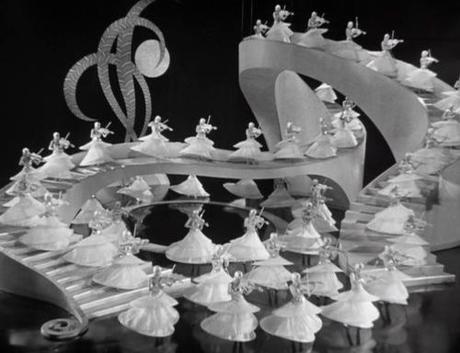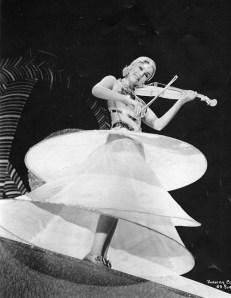
It’s no secret that I’m a huge fan of Busby Berkeley musical numbers. “42nd Street,” “We’re in the Money,” “By a Waterfall,” “Lullaby of Broadway,” I just can’t tear myself away from the TV if one of his numbers is playing. Picking just one to call my favorite is definitely a challenge, but “The Shadow Waltz” from Gold Diggers of 1933 is certainly very close to the top of the list.
I’ve heard people say that all Busby Berkeley had to do for inspiration is look into a kaleidoscope, but I think that really does a disservice to Busby Berkeley’s creativity. A musical number like “The Shadow Waltz” would have required a lot more thought than that. And to be able to translate that vision into what we see on screen would have required a great deal of creativity, precision, and persistence, not just from Busby, but from the dancers as well.

The big thing I love about “The Shadow Waltz” is that it’s fantasy for the sake of fantasy. This isn’t the kind of musical number that furthers the story or offers any kind of commentary. “The Shadow Waltz” is supposed to be part of a show taking place on a stage in front of a live audience, but Busby Berkeley seems totally aware of the fact that this number could never actually happen on a stage. Dissolves, sideways shots with mirrors, that bit where all the dancers stand in the shape of a violin and a bow comes out and moves across them, he knows how unbelievable this all is. But he’s trusting the audience to put aside their disbelief and let themselves get lost in the moment and enjoy it for what it is.
The only thing “The Shadow Waltz” was ever meant to be was a few minutes of pure escapism. Gold Diggers of 1933 was released in the midst of the Great Depression and these are the kind of moments audiences loved. And even though it isn’t 1933 anymore, isn’t it nice to lose yourself in the moment like that every now and then?
